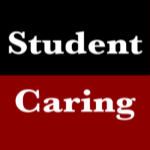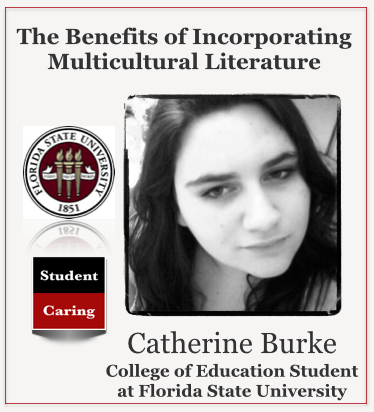As a pre-service teacher who has taken a plethora of education courses within my university’s College of Education, I have come to understand the integral role that multicultural literature pays within all classrooms regardless of age or grade level. Multicultural literature, as is defined within the article entitled “Multicultural Books Bring the World to Your Child”, is defined as “encompassing the multitude of cultural groups in the United States and the rest of the world.” Through use of this particular type of literature, students are able to gain exposure to a variety of unfamiliar cultures that are vastly different from their own. Said exposure is absolutely necessary as our society becomes more diverse in nature, a diversity that is directly reflected in the makeup of classrooms across the country.
This rising percentage of diversity within American classrooms is depicted by graphics within the article “Diversity in the Classroom” by the U.S Department of Education. The benefits of using multicultural literature within high school classrooms are explained further in the article titled “Teaching Multicultural Literature to White Students.” This article focuses on how discussing multicultural literature is difficult to begin with. However, this article also addresses how multicultural literature can deeply impact white students in particular. White students, in some cases, will experience tensions between what they have always believed to be true and what they see in these multicultural texts. As such, using multicultural literature in the classroom can expose these students to other cultures and alternative perspectives.
However, the benefits and applicability to multicultural literature continue to be questioned and face opposition from those who feel more comfortable using canonical texts. Those who oppose the use of multicultural literature within the classroom argue that this particular type of literature is “little more than a series of superficial nods to subordinate groups that often celebrate deficits and disguise the legacy of colonialism” (Urso, 1997). Instead of seeing novels within this genre as a glimpse into unfamiliar cultures and an opportunity for enlightenment, some of those in opposition to this academic movement view multicultural literature as biased support for minorities. Views like this and their overwhelming prevalence have resulted in rampant ignorance within many rural classrooms regarding the culture and plights of many individuals that below to these minority groups.
This is, of course, not to say that only non-members of these minorities can benefit from reading these texts. By incorporating multicultural literature within the curriculum, minority students feel more connected to their education and feel much less ostracized from society as a whole. As discussed within this text focused upon cultural conflicts within the classroom, “[teachers] should recognize that the linguistic form a student brings to school is intimately connected with loved ones, community, and personal identity.” (Delpit, pg. 53) As such, multicultural literature allows these students to express themselves during a time and within an environment in which they sometimes feel overwhelmed.
Overall, the benefits of incorporating multicultural literature into all academic curriculums are obvious and continue to thrive even when faced with overwhelming opposition.
References
Delpit, L. (2006). Other people’s children: Cultural conflict in the classroom. New York, NY: The New Press.
Gebeloff, Robert, Tyson Evans, and Andrei Scheinkman. “Diversity in the Classroom – The New York Times.”Diversity in the Classroom – The New York Times. U.S Department of Education, National Center for Education Statistics, n.d. Web. 18 June 2014. <http://projects.nytimes.com/immigration/
Heartling, A., Beach, R., & Parks, D. Perspective-Taking as Transformative Practice in Teaching Multicultural Literature to White Students. The English Journal, 97, 54-60. Retrieved June 5, 2014, from the Jstor database.
Kass, B.J. “Multicultural Books Bring the World to Your Child – Article Library – Books.” Multicultural Books Bring the World to Your Child. N.p., n.d. Web. 17 June 2014. <http://www.theallianceforec.org/library.php?c=2&news=48>.
Urso, Stephanie. “ERIC – What’s In a Name? An Argument Against “Multicultural” Education., 1997-Mar.”ERIC – What’s In a Name? An Argument Against “Multicultural” Education., 1997-Mar. N.p., n.d. Web. 18 June 2014. <http://eric.ed.gov/?id=ED407845>.
Delpit, L. (2006). Other people’s children: Cultural conflict in the classroom. New York, NY: The New Press.
Gebeloff, Robert, Tyson Evans, and Andrei Scheinkman. “Diversity in the Classroom – The New York Times.”Diversity in the Classroom – The New York Times. U.S Department of Education, National Center for Education Statistics, n.d. Web. 18 June 2014. <http://projects.nytimes.com/immigration/
Heartling, A., Beach, R., & Parks, D. Perspective-Taking as Transformative Practice in Teaching Multicultural Literature to White Students. The English Journal, 97, 54-60. Retrieved June 5, 2014, from the Jstor database.
Kass, B.J. “Multicultural Books Bring the World to Your Child – Article Library – Books.” Multicultural Books Bring the World to Your Child. N.p., n.d. Web. 17 June 2014. <http://www.theallianceforec.org/library.php?c=2&news=48>.
Urso, Stephanie. “ERIC – What’s In a Name? An Argument Against “Multicultural” Education., 1997-Mar.”ERIC – What’s In a Name? An Argument Against “Multicultural” Education., 1997-Mar. N.p., n.d. Web. 18 June 2014. <http://eric.ed.gov/?id=ED407845>.
About the author: Catherine Burke is a student in the College of Education (and future world–changer) at Florida State University.
Thank you Catherine for your valuable contribution to this blog: Guest Post from Florida State Student – Catherine Burke
Why Your Opinion Matters:
Our book:The Caring Professor: A Guide to Effective, Rewarding, and Rigorous Teaching, was written with feedback from many educators and students, which was our plan all along. We began by outlining our thoughts on a series of topics, then we recorded them to share with the world. From the feedback we received, we were informed about the needs of the student caring community. We need your feedback so we may continue to fulfill our mission statement and help students, the world over.
Thank you!
Daniel & David


0 Comments